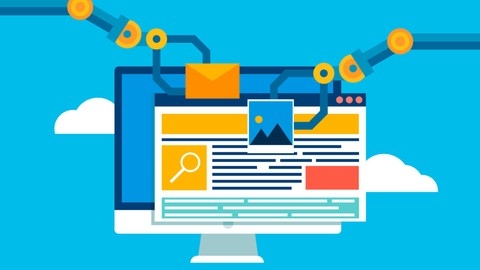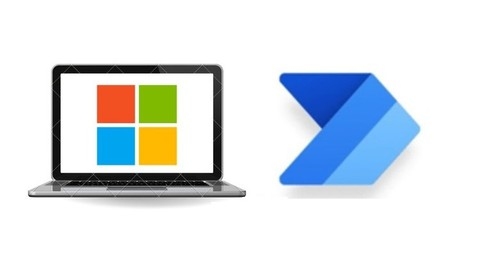Robotic Process Automation (RPA) is revolutionizing the way businesses operate, allowing them to automate repetitive tasks, improve efficiency, and reduce costs.
By learning RPA, you can gain valuable skills that are in high demand across various industries, opening doors to exciting career opportunities in automation and process optimization.
Whether you’re a seasoned professional looking to upskill or a newcomer eager to explore the world of automation, understanding RPA can significantly enhance your career prospects.
Finding the perfect RPA course on Udemy can be overwhelming, especially with the abundance of options available.
You’re likely seeking a course that not only provides a strong foundation in RPA concepts but also offers hands-on experience with industry-leading tools like UiPath and practical examples to solidify your understanding.
You want to ensure you’re investing your time and resources in a course that delivers on its promises and equips you with the skills necessary to excel in the field of RPA.
After carefully reviewing numerous RPA courses on Udemy, we’ve identified Robotic Process Automation - RPA Overview as the best overall course.
This comprehensive course provides a solid introduction to RPA fundamentals, covering key concepts, benefits, and real-world applications.
It also delves into popular RPA platforms like UiPath and Power Automate, offering hands-on experience and practical insights into the implementation process.
While Robotic Process Automation - RPA Overview stands out as our top recommendation, we understand that you might have specific learning preferences or career goals.
That’s why we’ve compiled a list of other excellent RPA courses on Udemy, each catering to different needs and skill levels.
Keep reading to explore these alternatives and find the perfect RPA course to embark on your automation journey.
Robotic Process Automation - RPA Overview
This RPA overview course begins by introducing you to the fundamental concepts of Robotic Process Automation (RPA).
You will explore what RPA is, its capabilities, and how it differs from other automation solutions like test automation.
The course then delves into the history and growing popularity of RPA, providing context for its relevance in today’s business landscape.
You’ll even get a glimpse into how RPA might change outsourcing and offshoring practices.
The course goes beyond theory by offering hands-on experience with industry-leading RPA platforms like UiPath and Power Automate.
You’ll witness real-world applications of RPA and gain a deeper understanding of its practical implementation.
The course explores the benefits, challenges, and potential risks associated with RPA implementation, providing a balanced perspective on this transformative technology.
You will gain insights into the industries and business functions that can benefit most from RPA.
You’ll also discover the different automation maturity levels and understand the projected growth and potential of the RPA market.
You’ll learn how to identify and prioritize RPA opportunities within an organization, create a compelling business case for automation initiatives, and even run a Proof of Concept (PoC) using tools like UiPath’s Automation Hub.
The course guides you through the process of establishing a dedicated Center of Excellence (COE) to manage and scale RPA efforts effectively.
Finally, you will receive practical advice for successful automation, from ranking RPA ideas to navigating common implementation pitfalls.
Complete UiPath RPA Developer Course: Build 7 Robots
This course provides a comprehensive introduction to UiPath Robotic Process Automation (RPA).
You will learn what RPA is and how to build software robots or “bots” using UiPath to automate repetitive tasks.
The course starts with an overview of RPA concepts and installing UiPath Studio.
You’ll then build your first bot to get hands-on experience with activities like getting user input, web scraping, making decisions using flowcharts, and displaying results.
As you progress, you’ll build increasingly complex bots to automate tasks like:
- Entering data from Excel into web and desktop applications
- Completing the UiPath Automation Challenge to earn a certificate
- Web scraping real estate listings and exporting the data to Excel
- Extracting data from 1000 PDF invoices and saving it to Excel
- Using Optical Character Recognition (OCR) to extract text from scanned documents
- Automating email operations like reading, sending, saving, and deleting emails
You’ll learn core RPA skills like using selectors, anchors, and descriptors to interact with applications.
You’ll also learn data manipulation techniques with Excel, strings, lists, and tables.
Error handling, debugging, and optimizing bot performance are covered as well.
The course dives into advanced topics like integrating with web services like Google Cloud Vision OCR, using regular expressions, and generating custom reports.
Finally, you’ll get an overview of UiPath Orchestrator for scheduling and managing bots.
Throughout the course, you’ll build 7 functional robots from scratch, reinforcing concepts with hands-on practice activities and quizzes.
By the end, you’ll have the skills to develop robust RPA solutions using UiPath.
UiPath 2024 - Level 1 RPA Developer
You will start by learning about the UiPath infrastructure, licenses, and the free community edition.
The course then guides you through installing UiPath on Windows and validating your installation by creating your first bot.
Next, you’ll get familiar with the UiPath Studio interface and learn how to create new projects.
The core RPA skills covered include working with sequences, flowcharts, state machines, variables, conditional logic, error handling, and debugging techniques.
You will learn how to automate web browsers like Edge, Chrome, and Firefox using UiPath’s recorder and manual assembly methods.
Desktop application automation is also covered, with hands-on exercises to practice these skills.
The course introduces you to reusable and shareable workflows, allowing you to break down large processes into smaller, modular components.
You’ll also learn how to work with data tables, a crucial skill for handling large datasets in RPA.
Excel automation is a significant part of the course, covering reading and writing data to worksheets, working with ranges and cells, and even reading configuration files from Excel.
Database automation basics are also included, enabling you to interact with databases directly from UiPath.
For those working in industries like finance, banking, and insurance, the course covers mainframe automation basics, a valuable skill for automating legacy systems.
Throughout the course, you’ll find hands-on exercises and challenges to reinforce your learning, such as reading text files, classifying them, and sending emails based on the classification.
Robotic Process Automation (RPA): Overview and Build a Robot
This course takes you on a journey from RPA novice to automation expert.
You begin with the fundamentals, learning what RPA is and how it works.
You’ll explore its capabilities, benefits, and drawbacks, and discover how AI supercharges RPA’s effectiveness.
You’ll also examine real-world case studies and discover major players in the RPA market like UiPath.
Get ready to dive into the practical side of RPA by building your first robot using UiPath Studio.
The course guides you through installing and navigating this powerful software, covering both the modern and classic design experiences.
You’ll gain hands-on experience creating projects and building a robot to tackle real-world tasks.
You will then discover how to implement RPA within your organization.
You’ll learn a step-by-step process for identifying, evaluating, and prioritizing processes for automation.
You’ll master the art of describing these processes in detail, and then design, develop, and test RPA solutions using what you’ve learned.
This practical approach continues as you explore implementation, monitoring, and continuous improvement of your automated processes.
Finally, you’ll learn how to build an RPA Center of Excellence (CoE), defining roles and responsibilities, and crafting a robust governance model for RPA initiatives.
You’ll leave equipped to identify critical success factors for RPA implementation and understand where to explore further.
UIPath RPA - Tech Primer
The course covers the fundamentals you need to understand before diving into UiPath RPA.
You’ll start by learning the importance of flowcharts in structuring processes, a crucial skill for any RPA tool.
The course walks you through flowchart fundamentals, best practices, and even demonstrates how to create them using dedicated tools and within UiPath itself.
Next, you’ll gain confidence navigating the Windows file system.
From understanding disk and folder structures to copying files and creating shortcuts, you’ll learn essential skills that come in handy when defining processes and running robots.
To prepare for web automation, the course provides a solid foundation in website basics.
You’ll learn about HTML, CSS, and how websites are structured, equipping you with the knowledge to confidently automate web interactions using UiPath.
The course also covers web selectors, a critical concept in RPA tools like UiPath.
You’ll learn about selector basics, challenges with dynamic selectors, and how to effectively use selectors in UiPath.
You’ll dive into programming basics, including functions, variables, and object-oriented programming concepts.
While these may seem daunting, the course explains them in a way that’s easy to understand, even for non-technical users.
Finally, you’ll get an introduction to databases, a crucial component of most business systems.
You’ll learn what databases are, how they’re used in companies, and how to interact with them using UiPath.
Throughout the course, you’ll have the opportunity to set up tools like Visual Studio, UiPath Studio, and database management systems, ensuring you have a hands-on learning experience.
RPA - Process Automation using UIPATH - Beginner to Expert
This course starts by introducing you to RPA and its advantages in the software industry, comparing it with Selenium, a popular web automation tool.
You’ll learn how to install the UiPath Community Edition and get familiar with its features and recording modes.
From there, the course dives into the core concepts of UiPath.
You’ll learn how to create blank processes for automation and understand the UI features that will aid your learning experience.
The course covers recording desktop application activities, understanding sequence and workflow, and downloading code used in the tutorials.
You’ll then explore various UiPath activities to build workflows or robots.
This includes automating Notepad and Word documents, screen scraping techniques to extract text from images, web pages, and documents, and building a robot that checks a country’s GDP and suggests business solutions based on that data.
The course dedicates significant time to UiPath’s Excel activities, teaching you how to read and write cells, work with data tables, and iterate over them.
You’ll apply these skills to build a robot that applies concessions for top merit students based on given logic.
Additionally, you’ll learn techniques for reading PDF and scanned images using UiPath, including OCR (Optical Character Recognition) technology.
The course walks you through building a robot to scan PDF documents and automate desktop applications, handling dynamic elements and regular expressions along the way.
Best practices for maintaining UiPath coding standards are also covered, such as optimization, exception handling, running multiple XAML files, parallel execution, and commenting techniques.
The course explores Gmail automation with UiPath, teaching you how to read emails, save attachments, and send emails with attachments.
Data scraping with AI techniques is introduced, and you’ll build a robot for data analytics, including filtering, sorting, and limiting data using UiPath activities.
Finally, you’ll learn about the Orchestrator, UiPath’s robot management dashboard, and how to run robots from it on demand.
The course concludes with tips on showcasing your UiPath knowledge for RPA job opportunities.
UiPath RPA - Level 2
In this course you’ll learn advanced techniques for building robust and scalable enterprise robots.
One key focus is on following best practices for naming conventions.
The course covers general guidelines as well as specific rules for capitalizing different types of elements like projects, processes, variables and assets.
Proper naming might seem trivial, but it’s crucial for maintainability as your robots grow more complex.
You’ll then apply these concepts by building a simple enterprise robot from scratch.
The step-by-step solution videos walk you through the entire development process, including error handling and adding the ability to gracefully stop execution.
The course dives into connecting multiple robot machines to UiPath Orchestrator for running unattended and attended automations.
You’ll also learn how to leverage version control with TFS for collaborative development.
To scale up your robots, you’ll explore using queues and transactions to process work items in parallel across multiple machines.
This allows tracking progress and enables features like auto-retries.
New skills covered include creating custom user input forms, basic web data scraping, and using the powerful state machine concept.
The course evaluates the ReFramework project template which provides a structured approach to robot development.
You’ll get an overview of UiPath’s component marketplace for accelerating development with pre-built activities and robots.
However, the course critically analyzes some available marketplace offerings to ensure they meet enterprise standards.
Additionally, the instructor shares insights from attending the 2018 UiPathForward Americas conference held at the iconic Fontainebleau Hotel in Miami Beach.
Become RPA Master in Microsoft Power Automate Desktop
This Microsoft Power Automate Desktop course begins with the fundamentals of Robotic Process Automation (RPA), explaining how it works and its significance in various industries.
You will discover how to create your account, navigate different pricing options, and install Power Automate Desktop on your Windows 10 device.
You will learn to build “desktop flows” - automated sequences of actions - using variables, lists, and conditional statements.
The course teaches you how to interact with databases, automate Excel tasks, utilize advanced Excel functions, and manipulate data effectively using Power Fx.
You will explore text manipulation, including regular expressions, and delve into email automation with Outlook, PDF data extraction, and XML manipulation.
You will learn to automate web browser actions like form filling and data extraction using UI automation techniques.
You will also discover how to schedule and share your desktop flows for seamless automation.
You will learn about the on-premises data gateway, error handling, and system actions for robust automation.
The course will introduce you to scripting capabilities with VBScript, JavaScript, Python, and PowerShell.
You will also explore the Power Automate Machine Runtime app for centralized management of automation tasks.
The course explores integrating Power Automate Desktop with other powerful tools.
You will learn about SharePoint actions, automate tasks within Microsoft Teams, and even integrate ChatGPT for next-level automation capabilities.
You will learn about OneDrive for Business actions and how to leverage Dataverse for data storage and retrieval.
Finally, the course introduces the latest features like Microsoft CoPilot and covers best practices for RPA development.
You’ll find valuable interview questions and answers to prepare you for real-world RPA job opportunities.








